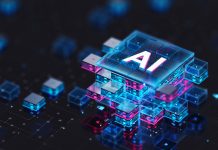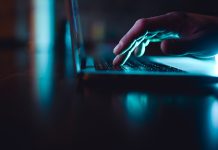Professor Katy Campbell, University of Alberta, investigates social inclusion through a gendered lens, specifically regarding technology
We have been interested in how gender impacts the design, adoption and use of technology since, at least, the 1970s. We have investigated the experiences of girls and women with learning and working with technology but more recently, we have adopted a broader, gendered perspective.
In the past 10 years or so we have more frequently explored gender issues through an intersectional lens, and even more recently as a problem of social inclusion. An intersectional lens helps us understand inclusion, and exclusion, from multiple dimensions of difference, such as ethnicity, age, sexuality, socioeconomic class, location, and health. For example, the experience in a computer science classroom, or in an engineering company, may be quite different for a middle-class Caucasian woman living in an urban environment than an indigenous woman living in a vulnerable rural environment with limited broadband access.
What is a “gendered perspective”?
Gender is both understood and realised in different ways among different cultures and at different times. In North America, gender and sex have almost become interchangeable, even though “gender” refers to social roles while “sex” refers to biological attributes. This is important from an intersectional point of view, because a “gendered” approach opens up our understanding of the challenges faced by, for example, transgendered learners or workers.
When we first started looking at gender and technology issues, from the 1970’s to the 1990’s, we focused on the design of technologies and tools that reflected a dominant Western culture. In the education sector, we looked at delivery models like distance education; software and game design; access to technology (i.e., the “digital divide”); designing computer labs in primary and secondary schools, and psychological barriers to participation. In other words, we believed that once girls and boys read the same books, were exposed to the same curriculum, taught by the same teacher, and given equal opportunities to practice, any remaining problems were the “fault” of the girl. Reflecting the “cultural deficit” model, we designed interventions to narrow the gaps in access, ability or attitude.
The cultural deficit model stems from negative beliefs and assumptions regarding the ability, aspirations and work ethic of systematically marginalised peoples. For example, once the digital divide problem was resolved, girls and boys would have equal access to the family’s computer. In fact, decades of research have shown us in general that boys have always had more and better access to computers at home, males tend to dominate computer resources in school, male teachers predominate in these settings, and computing spaces, software and games have been designed primarily by males and tend to reflect “masculine” interests. Unfortunate effects of this inequitable situation include lack of self-efficacy in girls and women and fewer women in STEM disciplines and workplaces, perpetuating the problem of poorly designed and exclusionary digital resources, curriculum, and learning and working spaces and policies. If race, location, age or religious beliefs are included and intersect with sex, the problem becomes much more complicated.
The digital divide
An intersectional approach gives us more tools to understand and, hopefully, resolve the digital divide challenge of the 2020’s that acknowledges that equitable access is more than technological. The World Bank defines “social inclusion” as “the process of improving the terms on which individuals and groups take part in society – improving the ability, opportunity, and dignity of those disadvantaged because of their identity.” Exclusion on the basis of social identity may involve discriminating or stigmatising attitudes, beliefs, or values, and also on the basis of legal systems, land, and labour markets. Social exclusion robs individuals of dignity, security, and opportunity, and happens across dimensions of gender, age, location, occupation, race, ethnicity, religion, citizenship status, disability, and sexual orientation and gender identity (SOGI), among other factors.
Likewise, UNESCO’s vision of an inclusive society as a “society for all”, in which every individual enjoys active participation, was reiterated in the Incheon Declaration and Framework for Action for the implementation of Sustainable Development Goal 4, “to ensure inclusive and equitable quality education and promote lifelong learning opportunities for all.” In the document Education 2030 (2016) that emerged from this declaration, over 1600 participants from 160 countries concluded “inclusion and equity through education is the cornerstone of a transformative education agenda, and we therefore commit to addressing all forms of exclusion and marginalisation, disparities and inequalities in access, participation and learning outcomes…recognise the importance of gender equality in achieving the right to education for all”, and are “committed to supporting gender-sensitive policies, planning and learning environments; mainstreaming gender issues in teacher training and curricula; and eliminating gender-based discrimination and violence in schools” (p.7).
A commitment to lifelong learning opportunities for all includes equitable and increased access to “quality technical and vocational education and training and higher education and research…the provision of flexible learning pathways…ensuring that all youth and adults, especially girls and women…are provided with adult learning, education and training opportunities” (p.7). Information and communication technologies (ICTs) are emphasised as strengthening education systems, knowledge dissemination, information access, quality and effective learning, and more effective service provision” (p.7).
In this series of editorials, we will continue to examine social inclusion, through a gendered lens, as it relates to ICTs and digital media for learning, working, and inclusion in civic processes. In particular, we will look at policies and frameworks for learning with technology in public and higher education and continuing and professional education, working in technology-related fields, and participating in governance opportunities.
*This is a commercial profile.
© 2019. This work is licensed under CC-BY-NC-ND.











